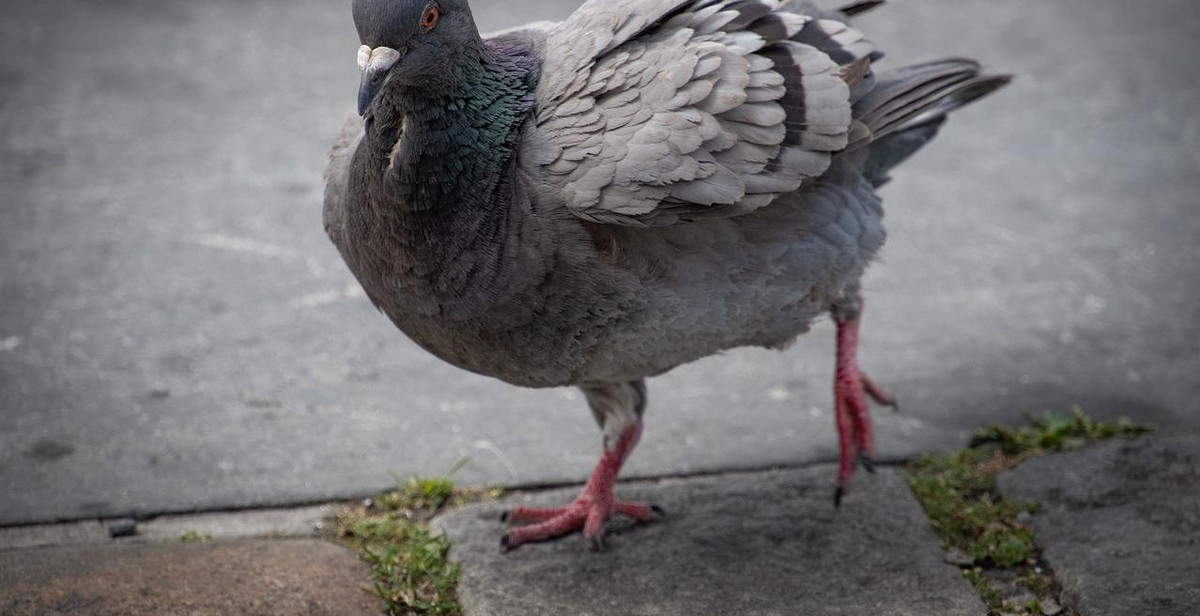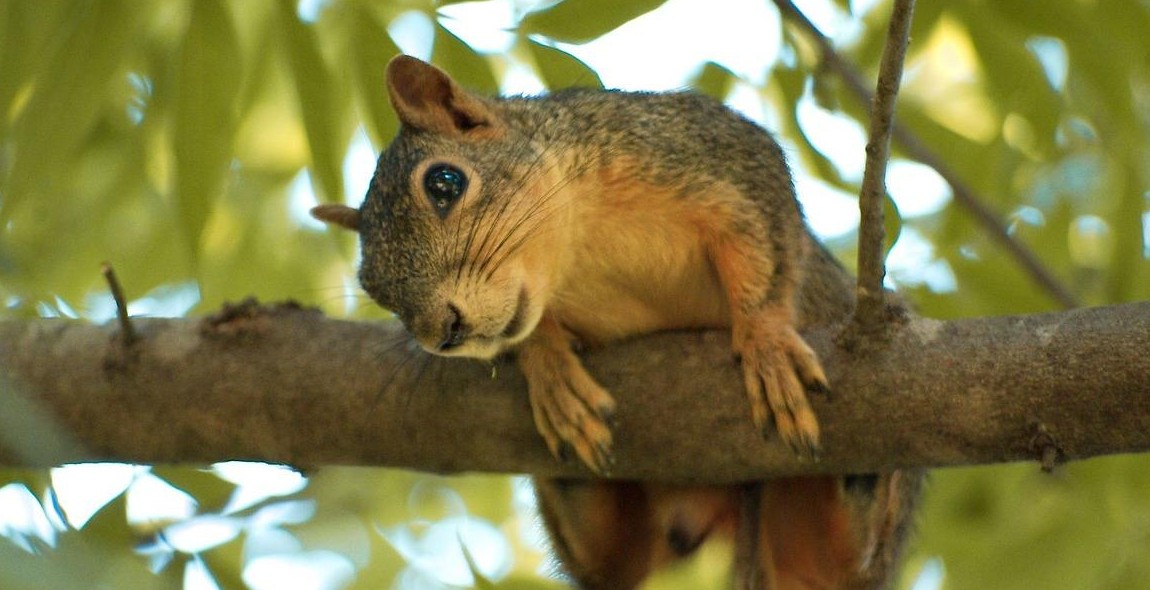Introduction
Urbanization has brought about significant changes in our environment, transforming vast areas of natural habitats into concrete jungles. However, amidst the bustling city streets and towering skyscrapers, there is a hidden world of urban wildlife that thrives in our backyards.
Urban wildlife refers to the diverse range of plant and animal species that have adapted to survive and even flourish in urban environments. From squirrels scurrying along power lines to birds nesting in high-rise buildings, these resilient creatures have found innovative ways to coexist with humans.
With the rapid expansion of cities worldwide, understanding and appreciating urban wildlife has become more crucial than ever. Not only do these creatures contribute to the ecological balance, but they also provide numerous benefits to urban dwellers. They help control pests, pollinate plants, and improve air quality, making our cities healthier and more sustainable.
This article explores the fascinating world of urban wildlife, shedding light on the species that call our cities home. We will delve into their behaviors, adaptations, and the challenges they face in an urban environment. By gaining a deeper understanding of urban wildlife, we can foster a greater appreciation for the natural world that exists right outside our doorstep.
Benefits of Urban Wildlife
Urban wildlife refers to the diverse range of animal and plant species that inhabit cities and urban areas. While cities are often associated with concrete jungles and pollution, the presence of urban wildlife brings numerous benefits to both the environment and the well-being of city dwellers.
1. Enhancing Biodiversity in Cities
One of the primary benefits of urban wildlife is the enhancement of biodiversity in cities. By providing habitats for a variety of species, urban areas contribute to the preservation of ecosystems and the protection of endangered plants and animals. Urban green spaces, such as parks and gardens, serve as vital refuges for birds, insects, and other wildlife, playing a crucial role in maintaining ecological balance.
2. Improving Air Quality
Urban wildlife plays an essential role in improving air quality in cities. Trees and plants found in urban areas act as natural air filters, absorbing pollutants and releasing oxygen. The presence of wildlife, such as bees and butterflies, contributes to pollination, allowing plants to thrive and further improving air quality. This natural process helps reduce the impact of air pollution, making cities healthier and more livable.
3. Promoting Mental Well-being
Interacting with urban wildlife has a positive impact on mental well-being. Numerous studies have shown that spending time in nature and observing wildlife can reduce stress, anxiety, and depression. The presence of urban wildlife in parks and green spaces provides an opportunity for city dwellers to connect with nature, offering a peaceful and calming environment amidst the hustle and bustle of urban life. Watching birds, squirrels, or even small insects can bring a sense of joy and tranquility, improving overall mental health.
In conclusion, urban wildlife brings a range of benefits to cities and their inhabitants. By enhancing biodiversity, improving air quality, and promoting mental well-being, the presence of urban wildlife in our backyards contributes to a greener, healthier, and more sustainable urban environment.

Common Urban Wildlife Species
2.1 Birds
Birds are a common sight in urban areas, adding color and melody to our surroundings. Some of the most frequently encountered bird species in urban environments include:
- Pigeons: Known for their adaptability, pigeons thrive in urban areas, nesting on buildings and scavenging for food.
- Sparrows: These small and agile birds are well-adapted to city life, often building nests in crevices and feeding on seeds and insects.
- Robins: Known for their distinctive red breast, robins are often spotted hopping around lawns and gardens, searching for worms and insects.
2.2 Squirrels
Squirrels are a common urban wildlife species known for their acrobatic antics and bushy tails. In urban areas, you may encounter:
- Gray Squirrels: These agile climbers can be seen leaping between trees or scurrying across power lines, often searching for nuts and seeds.
- Red Squirrels: Smaller than their gray counterparts, red squirrels are known for their fiery red fur and can be found in parks and wooded areas within urban settings.
2.3 Rabbits
Rabbits are often associated with rural environments, but they can also be found in urban areas. Common urban rabbit species include:
- Eastern Cottontail: These medium-sized rabbits are known for their cotton ball-like tails and are often found in suburban gardens and parks.
- European Rabbit: Originally from Europe, these rabbits have adapted to urban environments and can be found in some cities.
2.4 Foxes
Foxes are adaptable creatures that have successfully colonized urban areas around the world. Urban fox species include:
- Red Fox: With their reddish fur and bushy tails, red foxes have become a common sight in parks and green spaces within urban settings.
- Gray Fox: Smaller and more elusive than their red counterparts, gray foxes are occasionally spotted in urban areas, particularly near wooded patches.
2.5 Butterflies and Bees
Butterflies and bees are important pollinators that can be found even in the heart of the city. Some common urban species include:
- Monarch Butterfly: Known for its vibrant orange wings with black veins, monarch butterflies can often be seen fluttering around gardens and parks.
- Honeybees: These industrious insects can thrive in urban environments, visiting flowers and collecting nectar to produce honey.
These are just a few examples of the diverse wildlife species that have adapted to urban living. By appreciating and protecting these creatures, we can create a harmonious coexistence between nature and our urban environments.

Creating a Wildlife-friendly Backyard
3.1 Providing Food and Water Sources
One of the key ways to attract wildlife to your backyard is by providing them with a reliable food and water source. Consider installing bird feeders and baths to attract a variety of bird species. Fill the feeders with a mix of seeds and grains to cater to different bird preferences. Additionally, create a small water feature like a birdbath or a shallow dish with fresh water for birds and other wildlife to drink and bathe in.
3.2 Offering Shelter and Nesting Spaces
Wildlife needs safe and secure places to rest, hide, and raise their young. To provide shelter, consider adding birdhouses, bat boxes, or insect hotels to your backyard. These structures offer nesting opportunities for birds, bats, and beneficial insects. You can also leave patches of dense vegetation or create brush piles, which provide cover and hiding spots for small mammals, reptiles, and amphibians.
3.3 Planting Native Vegetation
Native plants are an essential part of creating a wildlife-friendly backyard. They provide food in the form of nectar, fruits, seeds, and foliage that many animals rely on. Choose a variety of native plants that bloom at different times throughout the year to ensure a continuous food source for wildlife. Additionally, native plants attract native insects, which are an important food source for birds and other wildlife.
3.4 Avoiding Chemicals and Pesticides
Avoid using chemical pesticides and herbicides in your backyard, as they can harm wildlife and disrupt the natural balance. Instead, opt for organic and natural alternatives to control pests and weeds. Integrated Pest Management techniques can help minimize the need for pesticides by promoting natural pest control methods, such as attracting beneficial insects and using physical barriers.
3.5 Installing Bird Feeders and Baths
Bird feeders and baths are not only a source of food and water but also a great way to attract a diverse range of bird species to your backyard. Choose feeders and baths that are suitable for the birds in your area and regularly clean and refill them to ensure they stay hygienic and attractive to birds.
Tips for Coexisting with Urban Wildlife
Living in urban areas often means sharing our surroundings with various forms of wildlife. While this can be an exciting and enriching experience, it is essential to maintain a respectful and harmonious relationship with these creatures. Here are some tips to help coexist peacefully with urban wildlife:
4.1 Maintain a Respectful Distance
When encountering wildlife, it is crucial to keep a safe distance. Observe from afar and avoid approaching or attempting to touch or feed them. Remember, wildlife is best appreciated when admired from a distance.
4.2 Secure Garbage and Compost
Properly securing garbage and compost is essential to prevent attracting unwanted wildlife. Use sturdy containers with tight-fitting lids to keep scavengers away. Consider using wildlife-resistant bins or storing garbage in a secure location until collection day.
4.3 Protect Pets and Livestock
Ensure the safety of your pets and livestock by keeping them indoors or in enclosed areas, especially during vulnerable times such as dawn and dusk. Fencing can help prevent conflicts with larger wildlife, and keeping pets on leashes during walks is also advisable.
4.4 Minimize Outdoor Lighting at Night
Excessive outdoor lighting can disrupt wildlife behavior, especially for nocturnal species. Minimize light pollution by using motion-sensor lights, shielding fixtures, or using low-intensity bulbs. This will help maintain the natural rhythms of urban wildlife.
4.5 Educate and Involve the Community
Spread awareness about urban wildlife and the importance of coexistence by educating your community. Organize workshops, seminars, or events to discuss wildlife-friendly practices. Encourage your neighbors to implement these tips, fostering a collective effort to create a harmonious environment for both humans and wildlife.
By following these tips, we can create a balance between urban life and the natural world, allowing us to enjoy the beauty of wildlife while minimizing conflicts and disturbances. Let’s embrace the presence of urban wildlife and strive to coexist peacefully with these fascinating creatures.
Conclusion
In conclusion, urban wildlife plays a vital role in connecting humans with nature and enhancing the overall biodiversity in our cities. Despite the challenges brought about by urbanization, many species have adapted and thrived in urban environments, creating unique opportunities for us to appreciate and coexist with wildlife right in our own backyards.
By providing suitable habitats, implementing conservation measures, and promoting awareness, we can ensure the continued survival and well-being of urban wildlife. Creating green spaces, such as parks, gardens, and rooftop habitats, not only benefit wildlife but also contribute to improving the quality of life for urban residents.
Urban wildlife not only brings joy and wonder to our lives but also provides essential ecosystem services, such as pollination and pest control. They remind us of the delicate balance between humans and nature, and the importance of preserving and protecting the natural world.
It is crucial for individuals, communities, and policymakers to recognize the value of urban wildlife and take proactive steps to conserve and manage their habitats. By incorporating wildlife-friendly practices into urban planning, promoting sustainable development, and educating the public, we can create harmonious and sustainable urban environments that benefit both humans and wildlife.
So, the next time you spot a bird singing outside your window or a squirrel darting across the street, take a moment to appreciate the wonders of urban wildlife and reflect on the incredible diversity and resilience of nature in our cities.
